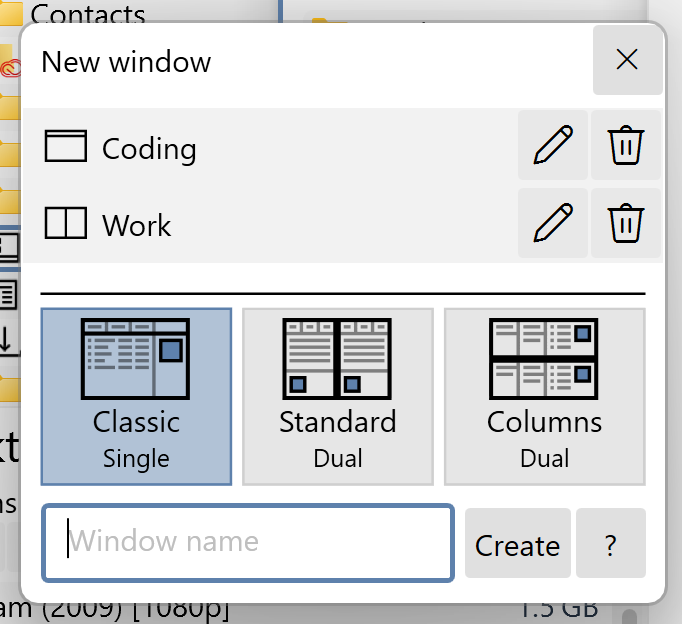Windows
Main Window
Opening, closing and positioning Main Window
See Starting, Reopening, and ClosingOneCommander (quick tip: if OneCommander is running but you can't see the window, try Win+Alt+E to re-open it. If it still isn't visible, perhaps it's got moved off-screen. Try Shift+F1 to move it back on screen).
Creating new windows
Click in the main program toolbar (or click New Window in menu top-left) to create a new window. You can create as many as you like, each with its own layout. Favorites, however, are shared by all Main Windows.
in the main program toolbar (or click New Window in menu top-left) to create a new window. You can create as many as you like, each with its own layout. Favorites, however, are shared by all Main Windows.

Give window names. This ensures it remembers tabs, layout, screen position for the next time you need that window
Using Windows Virtual Desktops
If you're using Windows Virtual Desktops, you can choose whether Win+Alt+E (but not Ctrl+`):
- brings OneCommander to your current desktop, or
- changes Virtual Desktops to the one on which a OneCommander Main Window is currently open.
This setting is in Settings > Window.
If no Window is currently open, then whichever setting you choose, Win+Alt+E opens a window in your current Virtual Desktop.
Moving dividers
Many of the dividers (the grey borders that separate different panes) have short dotted lines and V-shaped arrows, for example the Browser Divider:
Click and hold on the dotted line to move the divider (actually, you can click and hold anywhere along the divider's length except on the arrows for the same result).
Click on an arrow to move the divider as far as it will go. For example, clicking on a Browser Divider arrow hides the Browser that's in the direction in which the arrow points. Clicking on an arrow when the divider is at its limit of travel restores the divider to its default position.
Troubleshooting
- No window is visible but it shows in taskbar
If you have disconnected a monitor the window may still be stuck on the non-existent screen. Press Shift+F1 to reset it to default location on main screen, or right-click on it in taskbar and select Center Current Window